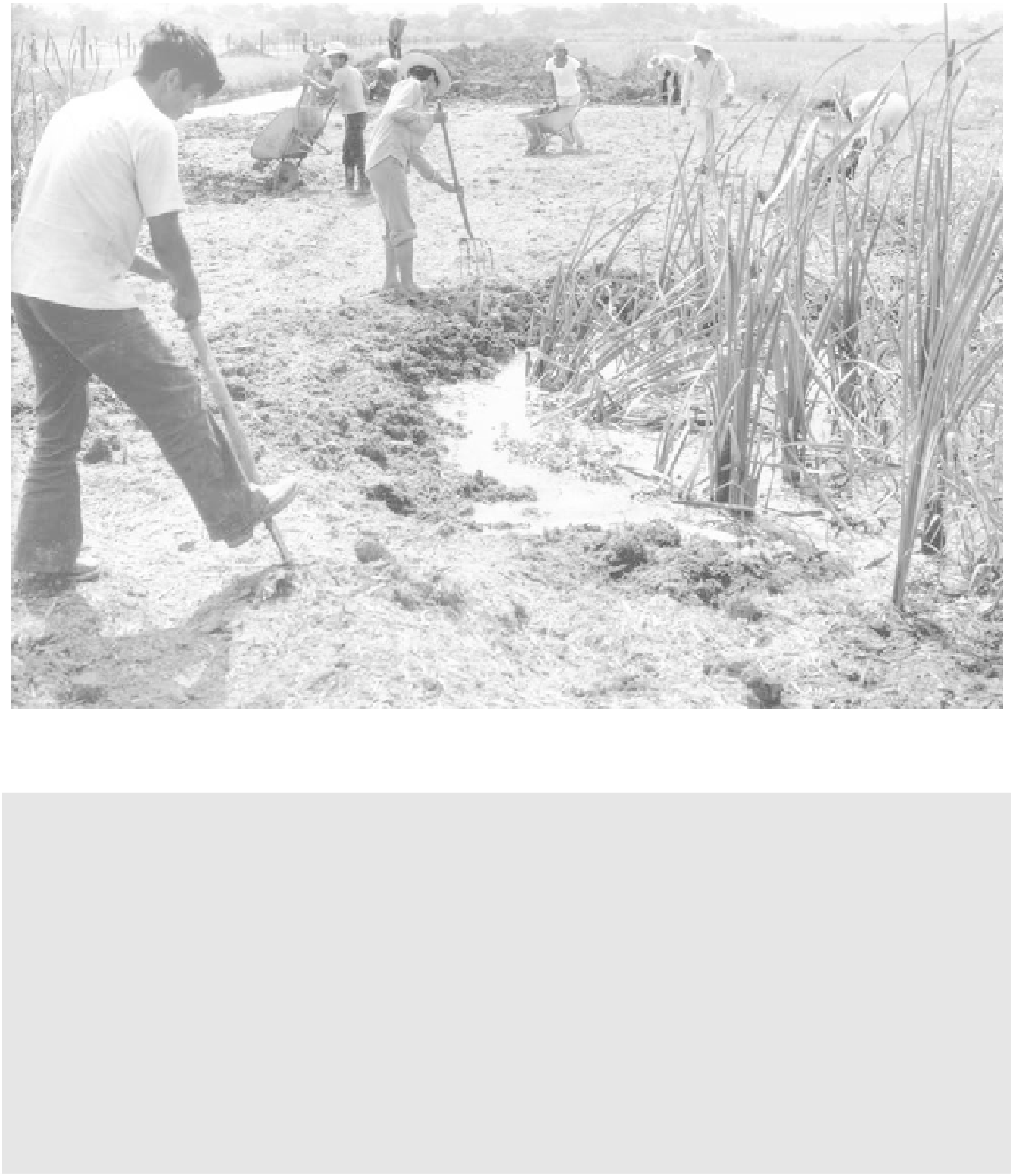Agriculture Reference
In-Depth Information
is to serve as a catchment for erosional sediments and
organic matter, and, in some cases, to make possible fish
production. Instead of changing the level of the water table,
cropping areas are raised above the water table. If the sys-
tem is installed in an area with an extended dry season,
capillary movement of water upward from the water table
can be sufficient to maintain crops. In some cases, irrigation
water can be drawn from the nearby canal. (Figure 9.5).
The most well-known examples of such raised-bed systems
are the Chinampas of central Mexico (described in more
detail in Chapter 6), the pond-dike systems of the Pearl
River Delta of southern China, and the canal-field systems
of The Netherlands. Many of these agroecosystems have a
very long history of successful management.
FIGURE 9.5
Constructing a raised-field farming system in a wetland in Tabasco, Mexico.
Soil dug from lateral ditches is being
layered with waste sugar cane fiber to create a raised planting surface.
PRE-HISPANIC RAISED FIELD SYSTEMS OF QUINTANA ROO, MEXICO
Many areas of the world rely on food grown in wetlands or periodically flooded areas. Farmers in these areas have
adapted to conditions of excessive water in a variety of different ways, and some of the resulting systems are highly
productive. Some are also very old. Studies indicate that the Maya of the Yucatan peninsula developed, more than
2000 years ago, a productive wetland agroecosystem in the lowlands of what is now the state of Quintana Roo,
Mexico (Gliessman, 1991).
The remnants of huge systems of canals and raised beds encompassing more than 40,000 ha have been discovered
and studied (Gomez-Pompa et al., 2003). Dating studies show that the canal and bed systems were formed as early
as 800
BC
and were used continuously for more than 1000 years. It is unclear why the fields were eventually abandoned.
By analyzing the remains of the system, scientists have been able to deduce the technique used to prepare the
canals and platforms. The Mayans dug the canals down to the bottom of the topsoil, and formed the platforms by
mounding up the soil from the canals onto the surface between the canals. The canals would have been periodically
cleaned, allowing the Mayans to move soil and organic matter that collected in the canals back up to the mounds.

Search WWH ::

Custom Search